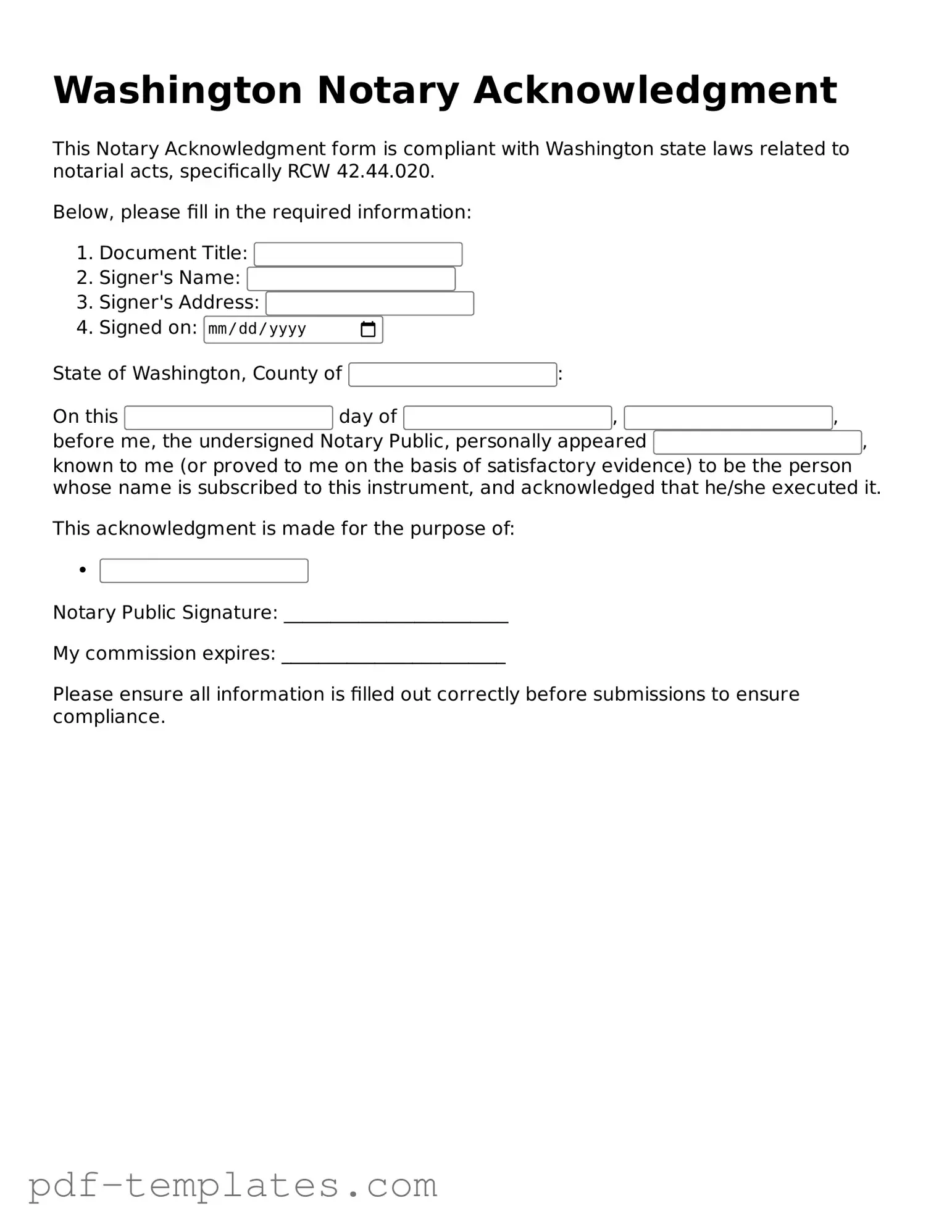The Washington Notary Acknowledgment form is similar to the Affidavit. An affidavit is a written statement confirmed by oath or affirmation, used as evidence in court. Both documents serve to verify the authenticity of signatures and affirm the identity of the signer. While the notary acknowledgment is typically used for documents that require notarization, affidavits are often employed in legal proceedings to provide sworn testimony. The commonality lies in their function of providing a formal declaration of truth, ensuring that the information presented is credible and reliable.
The California Motor Vehicle Power of Attorney form is a crucial legal document that permits a vehicle owner to designate another individual to manage specific vehicle-related tasks on their behalf, such as registering the vehicle and signing necessary sale documents. This delegation is especially useful for individuals who are unable to handle these matters due to absence or incapacity. For those looking for comprehensive resources related to such forms, you can refer to All California Forms.
Another document that shares similarities with the Washington Notary Acknowledgment form is the Power of Attorney. This document grants one person the authority to act on behalf of another in legal matters. Like the notary acknowledgment, a Power of Attorney must be signed in the presence of a notary to ensure its validity. Both documents require the notary to verify the identity of the signers and confirm that they are signing voluntarily. This process adds a layer of protection against fraud and ensures that the intentions of the parties involved are clear and legally binding.
The Certificate of Acknowledgment also resembles the Washington Notary Acknowledgment form. This certificate is often attached to a document to confirm that the signer appeared before a notary and acknowledged their signature. Both documents serve the purpose of authenticating signatures and ensuring that the signers understand the contents of the document they are signing. While the notary acknowledgment is a specific form used in Washington, the certificate of acknowledgment can vary by state but fundamentally performs the same function of verifying the legitimacy of a signature.
The Deed is another document similar to the Washington Notary Acknowledgment form. A deed is a legal document that transfers ownership of property from one party to another. Notarization is typically required for deeds to ensure that the transfer is legitimate and that the parties involved are who they claim to be. The notary's role in both documents is to witness the signing process and provide assurance that the transaction is conducted lawfully. This helps prevent disputes over property ownership and maintains the integrity of the real estate transaction.
Lastly, the Last Will and Testament shares characteristics with the Washington Notary Acknowledgment form. A will outlines an individual's wishes regarding the distribution of their assets after death. While not all states require wills to be notarized, having a notary acknowledgment can add an extra layer of validity to the document. Both the will and the notary acknowledgment involve confirming the identity of the signer and ensuring that the signing is done willingly and without coercion. This helps to uphold the testator's intentions and minimizes the likelihood of challenges to the will in the future.
